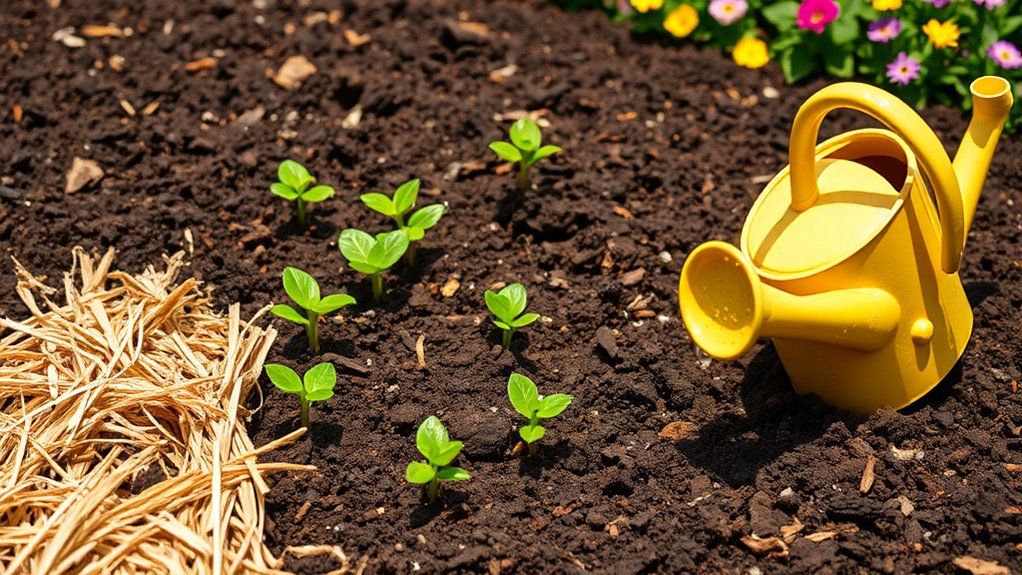The Trick I Use to Keep My Soil Healthy All Season
Think of your soil as a living organism, constantly in need of care and nourishment. To achieve optimal health, you can incorporate practices that foster organic matter and enhance biodiversity. Cover crops and organic mulching are powerful tools in this process, but their true potential lies in understanding how they interact with your soil’s ecosystem. Discover how these methods can transform your approach to soil health and lead to thriving plants year-round.
Understanding Soil Health
Understanding soil health is crucial for promoting sustainable agriculture and fostering biodiversity, so it’s essential to recognize the factors that contribute to it. A healthy soil guide highlights key indicators such as nutrient availability, microbial activity, and soil structure. One important aspect of maintaining soil health is performing soil testing to identify any deficiencies and ensure optimal growing conditions.
The Importance of Organic Matter
Although you might think of soil as just dirt, organic matter plays a critical role in maintaining its health and productivity. It improves soil structure, enhances water retention, and fosters beneficial microbial activity. By incorporating compost or cover crops, you enrich the soil, establishing a robust ecosystem that supports plant growth. Prioritizing organic matter is essential for sustainable and productive gardening or farming practices. Furthermore, using home composting methods can significantly enhance the quality of organic matter you add to your soil.
Crop Rotation Techniques
Incorporating organic matter into your soil lays a strong foundation for effective crop rotation techniques.
Rotating crops prevents nutrient depletion and reduces pest and disease cycles. You should alternate deep-rooted and shallow-rooted plants to optimize soil structure and nutrient uptake.
Additionally, consider grouping plants by family to disrupt soil-borne pathogens. This strategic method fosters resilient ecosystems and enhances overall soil health throughout the growing season. Furthermore, regular soil testing ensures that you are aware of nutrient levels and soil pH, helping to guide your crop choices for maximum productivity.
Effective Mulching Methods
Effective mulching methods can significantly improve soil health and enhance crop productivity.
By adopting the right strategies, you can conserve moisture, suppress weeds, and enrich your soil.
Consider these effective mulching techniques:
- Organic mulch (straw, wood chips)
- Inorganic mulch (landscape fabric, gravel)
- Living mulch (clover, vetch)
- Covering soil with cardboard or newspaper
Each method contributes uniquely to sustaining your soil’s vitality. Additionally, using innovative mulch techniques can further optimize your garden’s health by enhancing moisture retention and nutrient availability.
Utilizing Cover Crops for Soil Enrichment
When you utilize cover crops, you significantly enhance soil health and biodiversity.
Cover crops, like clover or rye, improve soil structure, prevent erosion, and suppress weeds. They also add organic matter, which enhances nutrient availability and moisture retention. Additionally, using cover crops can help revive poor garden soil, making it more conducive to plant growth.
Research indicates that cycling different cover crops can improve microbial diversity, ultimately leading to healthier soils and more productive gardens throughout the growing season.

